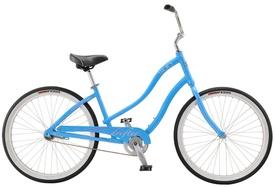How do you run downhill?

crackpotbaby
Posts: 1,297 Member
Let me preface this with the fact that I am not a runner ...
However, over the last year I have increased my cardio from not being able to jog to the end of the street and back to comfortably running about 3km, 2 - 3 times per week.
I run mostly on trails through a local nature reserve which consisted of STEEP stairs with an ascent of about 50mts elevation and short to moderate hills of relatively high gradient.
The up hills a no problem but the downhills I find annoying.
I can't seem to get my foot to fall comfortably and I'm either taking short rapid steps or trying to maintain my stride but feel like I'm falling forward. Neither feels 'right'.
.................
Any tips on better control while maintaining running down hill?
However, over the last year I have increased my cardio from not being able to jog to the end of the street and back to comfortably running about 3km, 2 - 3 times per week.
I run mostly on trails through a local nature reserve which consisted of STEEP stairs with an ascent of about 50mts elevation and short to moderate hills of relatively high gradient.
The up hills a no problem but the downhills I find annoying.
I can't seem to get my foot to fall comfortably and I'm either taking short rapid steps or trying to maintain my stride but feel like I'm falling forward. Neither feels 'right'.
.................
Any tips on better control while maintaining running down hill?
0
Replies
-
-
I usually do the one foot infront of the other technique and after a few of these motions I end up rolling down the hill....9
-
I usually concentrate on not jamming my toes into the front of my shoes and am too preoccupied with this to be aware of any other issues I may or may not be having. Though I did find a hill the other day that caused me to run faster than my lungs could keep up with. No fun. Starred for useful answers from the more experienced runners.1
-
Running downhill I think is one of the most technical things. I haven't learnt it yet, but I believe short steps are key, zigzagging, using your arms for balance and not leaning backwards and braking. Do a web search for trail running techniques and I'm sure you'll find a host of suggestions.
Another tip I meant is to concentrate a few feet forwards on where to place your foot not where NOT to place your foot1 -
Thanks @girlinahat, I will google some trail running sites.
I was hoping there might be an easy answer but I will certainly try some of your suggestions.0 -
-
showerbeer182 wrote: »I usually do the one foot infront of the other technique and after a few of these motions I end up rolling down the hill....
Ha, same here. I gave up running downhill on trails after a good fall on my face, broke my glasses, blackened my eye and got an "I told you so" from my less than sympathetic husband. Good luck to you, trail running is fun.0 -
showerbeer182 wrote: »I usually do the one foot infront of the other technique and after a few of these motions I end up rolling down the hill....
Ha, same here. I gave up running downhill on trails after a good fall on my face, broke my glasses, blackened my eye and got an "I told you so" from my less than sympathetic husband. Good luck to you, trail running is fun.
Mmmhmm I am with ya!!!0 -
Just don't let this happen to you:

Yeah, pretty sure by the size of the packs on the others this girl wasn't out for a jog in a suburban nature reserve.
I don't take a sleeping bag with me either so should be right ... (?)
This is like showing a pic of a car wreck on a thread where someone asked for tips on reverse parking.
I kinda just am after a bit of technical advice although maybe I should just stay home and jog on the spot where I'm nice and safe.
3 -
That was me after ra running down a hill and breaking my ankle and subsequently needing SAR to take me down the mountain.
Pay attention to your terrain! That's my advice. Keep alert and don't let your mind wander.3 -
Carefully.1
-
That is a really good question. I usually just walk the bridge here. From one end to the other is 1 mile, so the round trip is two miles. A couple weeks ago after walking up the first side and down the other. I walked back up and thought I'm just going to jog down the last side back to my car. Just for fun I think I'll try jogging, it's downhill so gravity will help me. I did jog the last half mile, slowly and when I got back to my car I noticed my shoe seemed really tight on my left foot. When I got home it started hurting, so I put ice on it. It was swollen and hurt for a few days. I have no idea what I did to it because it didn't hurt wile I was jogging, but something went wrong. I got to work and people said, "Never run downhill on cement!" Oops.0
-
First of all, if you run at all, you're a runner.
I became a new runner this year and so I don't have a lot of advice but I found that a bit of zig zagging helped to slow me down coming downhill. I always found it easier to run uphill though.
Hopefully some more experienced runners will weigh in here.2 -
@Joenali that's great advice. Thank you. I do pay attention.
I'm sorry you had an injury; I hope you healed well.
It looks awfully wet an slippery in that photo for running of any kind whatever the slope!
As you can see in the pic I put up I am using mostly dry dirt tracks or stone/concrete paths with inclines.
.............
I'm really after advice on how to adjust my running for downhill so it feels a bit less thumpy and awkward, even when running on footpaths etc. My area is very hilly and it's a case of either go up and down them or don't bother at all.0 -
HI Lizery, best way to get use to downhill running is to start off slowly and get a feel for it so you can start trusting yourself, your shoes and the terrain before doing it at your usual speed. Lean forward a little from the ankles (try not to lean back), shorten your gait to begin with, slow your pace, keep your legs bent, try to strike midfoot rather than heel or forefoot (increase contact area lessens slippage), keep your eyes on the trail not too far infront of you couple of metres max looking for trip hazards, best route etc; use your arms for balance. Keep your foot-fall light and springy.
Once you trust your shoes and know the trail and you can up speed and lengthen your stride, keep midfoot strike. Running downhill should have a slightly elongated stride than usual but in wet/muddy conditions, or as a new hill runner this isn't practical or safe as you're not used to the higher impact or the sensation. keep it slow and short until you get your feet.
If you can, start on a shallow incline in the dry (that isn't loose, so tarmac if possible, or a good well maintained trail), then work your way up to the difficult stuff. When in doubt walk. When you go off-road, make sure you have good off-roaders on your feet, they don't have to be expensive, but your usual road-runners won't give you the grip you will need if it's muddy or smooth stone (or protection from jabbly stones).
Don't fight gravity go with it, if you find yourself going too fast and can't slow or stop in a controlled manner jump straight up in the air and land both feet at same time slightly squiff (like a squat but with feet not parallel to each other, bend legs to take the impact. Be ready to go all the way down to sitting if needed, a muddy bum's better than muddy grazes and a sprain.
It'll take a while to get used to running hills, but once you get it feel free to run screaming down them hands in the air like a complete lunatic It just makes it that much more fun and keeps weirdos away.
It just makes it that much more fun and keeps weirdos away.
Hope that helps.6 -
It'll take a while to get used to running hills, but once you get it feel free to run screaming down them hands in the air like a complete lunatic It just makes it that much more fun and keeps weirdos away.
It just makes it that much more fun and keeps weirdos away.
this is where I want to be.
Also, OP, looking at that photo you posted of the trails, watch out for bikes....
2 -
girlinahat wrote: »
It'll take a while to get used to running hills, but once you get it feel free to run screaming down them hands in the air like a complete lunatic It just makes it that much more fun and keeps weirdos away.
It just makes it that much more fun and keeps weirdos away.
this is where I want to be.
Also, OP, looking at that photo you posted of the trails, watch out for bikes....
I swear this is why my husband stopped running with me... sheer embarrassment. wheeeeeeeee!!!!! *much hand in air jiggling* aaaarrrggghhhh, woohoooooo *more arm jiggling* *maniacal laughing*.
Yep, bikes! Just keep in mind it's easier and safer for runners/walkers to get out of the way, or make room than it is for a biker cos physics, do give bikers a shout if you hear them just a quick 'walker/runner ahead' will do anything to alert them to your presence - obviously thats for off-road only. On shared-pavement bikers should be very aware of your presence, give you warning shouts if behind you, they should slow down and give you loads of room.0 -
I spent a lot of time racing in high school and down hill = make up time in the race. - so I tended to go balls out down hill and free for all- it's a little disconcerting at first- but after a while- the feeling of "chaos" careening down the hill becomes addicting.0
-
I spent a lot of time racing in high school and down hill = make up time in the race. - so I tended to go balls out down hill and free for all- it's a little disconcerting at first- but after a while- the feeling of "chaos" careening down the hill becomes addicting.
This is me. I do some endurance hikes/trail runs. It has turned into a HUGE adrenaline rush to run down a steep trail on the edge of out of control.0 -
HI Lizery, best way to get use to downhill running is to start off slowly and get a feel for it so you can start trusting yourself, your shoes and the terrain before doing it at your usual speed. Lean forward a little from the ankles (try not to lean back), shorten your gait to begin with, slow your pace, keep your legs bent, try to strike midfoot rather than heel or forefoot (increase contact area lessens slippage), keep your eyes on the trail not too far infront of you couple of metres max looking for trip hazards, best route etc; use your arms for balance. Keep your foot-fall light and springy.
Once you trust your shoes and know the trail and you can up speed and lengthen your stride, keep midfoot strike. Running downhill should have a slightly elongated stride than usual but in wet/muddy conditions, or as a new hill runner this isn't practical or safe as you're not used to the higher impact or the sensation. keep it slow and short until you get your feet.
If you can, start on a shallow incline in the dry (that isn't loose, so tarmac if possible, or a good well maintained trail), then work your way up to the difficult stuff. When in doubt walk. When you go off-road, make sure you have good off-roaders on your feet, they don't have to be expensive, but your usual road-runners won't give you the grip you will need if it's muddy or smooth stone (or protection from jabbly stones).
Don't fight gravity go with it, if you find yourself going too fast and can't slow or stop in a controlled manner jump straight up in the air and land both feet at same time slightly squiff (like a squat but with feet not parallel to each other, bend legs to take the impact. Be ready to go all the way down to sitting if needed, a muddy bum's better than muddy grazes and a sprain.
It'll take a while to get used to running hills, but once you get it feel free to run screaming down them hands in the air like a complete lunatic It just makes it that much more fun and keeps weirdos away.
It just makes it that much more fun and keeps weirdos away.
Hope that helps.
Thanks. This is very helpful. I tend to hit heel first and it's very jolty on the downhill stretches.
0 -
girlinahat wrote: »
It'll take a while to get used to running hills, but once you get it feel free to run screaming down them hands in the air like a complete lunatic It just makes it that much more fun and keeps weirdos away.
It just makes it that much more fun and keeps weirdos away.
this is where I want to be.
Also, OP, looking at that photo you posted of the trails, watch out for bikes....
I swear this is why my husband stopped running with me... sheer embarrassment. wheeeeeeeee!!!!! *much hand in air jiggling* aaaarrrggghhhh, woohoooooo *more arm jiggling* *maniacal laughing*.
Yep, bikes! Just keep in mind it's easier and safer for runners/walkers to get out of the way, or make room than it is for a biker cos physics, do give bikers a shout if you hear them just a quick 'walker/runner ahead' will do anything to alert them to your presence - obviously thats for off-road only. On shared-pavement bikers should be very aware of your presence, give you warning shouts if behind you, they should slow down and give you loads of room.
Absolutely! My main track is walkers/runners only but the other pictured is a shared trail.
My family rode that one and I only ran it because my stupid bike is to stupid and pretty for that terrain (I'm looking for a decent mountain bike now too!).
0 -
Any tips on better control while maintaining running down hill?
A bit of context, most of my running, and all of my racing, is trails. The photos you posted are simple to run as they're smooth surfaced.
A few things to think about, starting from the top.- Head up, looking ahead, not down. Plan your footing several paces ahead and pick your route out.
- use your arms to help balance, lift them up and out if you need to. I find that feels more solid to me, and it helps avoid hunching.
- lean forward from your hips and commit to the run.
- High cadence, and don't overextend your leading leg. If you do overextend then you'll slow yourself down and lose a lot of energy in braking. Use your momentum.
- I prefer neutral, low drop shoes with minimal cushion, to give myself as much feel for the ground as possible. Cushioned shoes absorb energy and I hate the loss of feel.
The main thing is to have fun with it.4 -
0
-
MeanderingMammal wrote: »Any tips on better control while maintaining running down hill?
A bit of context, most of my running, and all of my racing, is trails. The photos you posted are simple to run as they're smooth surfaced.
A few things to think about, starting from the top.- Head up, looking ahead, not down. Plan your footing several paces ahead and pick your route out.
- use your arms to help balance, lift them up and out if you need to. I find that feels more solid to me, and it helps avoid hunching.
- lean forward from your hips and commit to the run.
- High cadence, and don't overextend your leading leg. If you do overextend then you'll slow yourself down and lose a lot of energy in braking. Use your momentum.
- I prefer neutral, low drop shoes with minimal cushion, to give myself as much feel for the ground as possible. Cushioned shoes absorb energy and I hate the loss of feel.
The main thing is to have fun with it.
Thank-you so much.
0 -
Joenali,
I stumble upon your message about swimming in three weeks after ORIF surgery. I have had my surgery 4 weeks ago and still not weight bearing at this time, I am going nuts from inactivity. Swimming sounds really good. How did you manage to lower yourself in the pool? How did you manage to get out? Did you have to cover the incisions somehow? Do they get irritated after being in pool water? Sorry to put this into unrelated thread, but for some reson I am not able to send you a personal message. Thanks for sharing your experience.0 -
After years of being overweight my knees aren't what they were so I tend to take it easy running downhill to avoid injury. There is a temptation to overstride I think.1
-
Hey! I had to wait until the incision was healed enough and had my doctor's go ahead before getting in the water. So make sure you do that. The first time at the pool I used the lift to get in and out of the water. Also I should clarify that my first time in the pool I didn't swim per se, I mostly used my aqua jogging belt to water walk/jog very carefully. After going a few times I started using a pull buoy between my legs to swim a bit without kicking. It was so nice to get into the pool to just move around after being so immobile. Good luck!Joenali,
I stumble upon your message about swimming in three weeks after ORIF surgery. I have had my surgery 4 weeks ago and still not weight bearing at this time, I am going nuts from inactivity. Swimming sounds really good. How did you manage to lower yourself in the pool? How did you manage to get out? Did you have to cover the incisions somehow? Do they get irritated after being in pool water? Sorry to put this into unrelated thread, but for some reson I am not able to send you a personal message. Thanks for sharing your experience.
0 -
-
I usually turn my feet sideways and go down like that. It's slower, but I'd rather not end up falling down.1
-
I'm not that old, but old enough to know that I cannot afford to get hurt. If the downhill is too steep, I walk/jog it carefully. My trail running has enough ups and downs that I can use some of the steeper downhills as recovery from the uphills. Unless you're in a race, there's no reason to risk injury going balls-out downhill. As you get more experience, you'll reach a comfort level. Mine is a very low risk one. Others have much more. Most of all, enjoy your new activity! I LOVE trail running
 0
0
This discussion has been closed.
Categories
- All Categories
- 1.4M Health, Wellness and Goals
- 394.8K Introduce Yourself
- 44K Getting Started
- 260.6K Health and Weight Loss
- 176.2K Food and Nutrition
- 47.5K Recipes
- 232.7K Fitness and Exercise
- 444 Sleep, Mindfulness and Overall Wellness
- 6.5K Goal: Maintaining Weight
- 8.6K Goal: Gaining Weight and Body Building
- 153.2K Motivation and Support
- 8.2K Challenges
- 1.3K Debate Club
- 96.4K Chit-Chat
- 2.5K Fun and Games
- 4.2K MyFitnessPal Information
- 16 News and Announcements
- 1.3K Feature Suggestions and Ideas
- 2.8K MyFitnessPal Tech Support Questions














